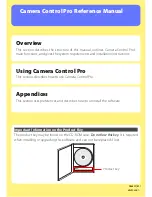
Voice over WLAN Mobile IP Touch Design Guide R2.0
3.3. Roaming and Handover
3.3.1. Roaming definition
Refers to the ability to be reached (ie: making and receiving calls) in a different Site or Network.
Inside a site or a network, provides a wireless device the capability to associate to an AP after
a power-on or a reset of this device.
3.3.2. Handover definition
Refers to the ability to move from one AP coverage area to another AP without service disruption or loss
in connectivity.
3.3.3. Handover and Roaming restrictions
This table is a summary of roaming and handover capabilities according to the different VoWLAN
topologies.
Note 1
Only Roaming is allowed (No Handover capability due to lack of RF coverage).
- Roamer welcome requires an oversizing of the SVP server capacity (local users + remote users)
Note 2
Using a Centralized SVP Server, this Campus configuration is well adapted to a routed data network
environment (1 Voice VLAN per building). As long as the Mobile IP Tunnel is maintained between both
WLAN switches, MIPT keeps its initial IP address (VLAN A) during its move (from building A to building B).
Mobile IP Tunnel once up is maintained for about 18 minutes (default value that is configurable)
If the user turns its MIPT on in building B (Mobile IP Tunnel being not up), then the MIPT registers with a
new IP address belonging to VLAN B. As a result a specific DHCP range is needed for visitors (roamers).
Node 3
This configuration does not allow roaming because the MIPT during its move is still managed by the
original Com Server A (as if it was locally attached). Com server B has no knowledge of the unexpected
traffic created on WAN by the roaming MIPT. Due to CAC issue on WAN, roaming is not supported.
ESD/ Central Pre Sales / DF/ PH
30/45
January 2007 – Ed 01
















































